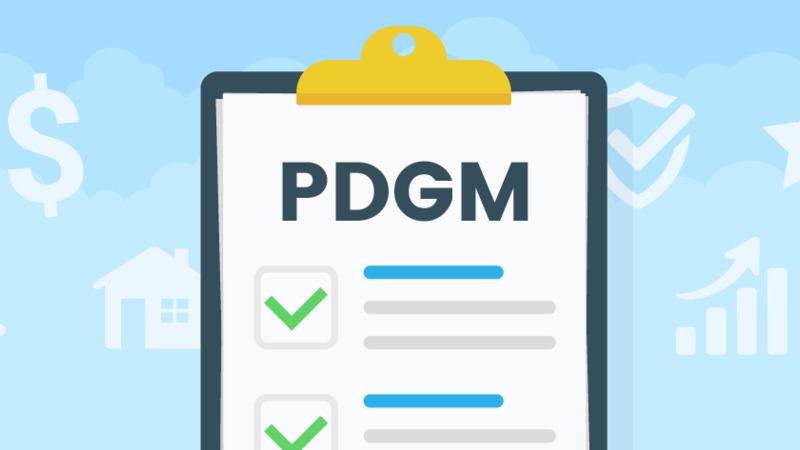Patient Driven Groupings Model (PDGM)

New payment episode timings: PDGM will break up the standard 60-day episode of care into one of two 30-day periods. That means 30-day periods will be implemented as a basis for payment vs. the 60-day periods used now. Each 30-day period is grouped into one of 12 clinical categories based on the patient’s main diagnosis.
Payment groupings: PDGM will increase the number of payment groupings and unique case-mix potential from 153 to 432. PPS allowed for 153 combinations, but with PDGM each 30-day period can be categorized into one of 432 case-mix groups.
Elimination of therapy thresholds: PDGM will eliminate therapy thresholds as a primary determinant of reimbursement, so therapy visits will no longer determine reimbursement. The number of therapy visits will no longer impact the case-mix weight.
OASIS assessments: Will remain on a 60-day cycle, but there will be two payment periods within that cycle instead of one. Based on an OASIS assessment, new 30-day periods will be categorized according to five subgroups: Timing of 30-day episode (early or late): Only the first 30-day episode would qualify as “early,” with all subsequent episodes qualifying as “late.” Currently, the first two 60-day periods are considered early.
•Admission source (community or institutional referral): The 30-day period would be classified as “institutional” if the patient had an acute or post-acute stay within 14 days of the start of care.
•Clinical grouping: Patients would be assigned to 1 of 6 major clinical groups. Each 30-day period is grouped into one of 12 clinical categories based on the patient’s main diagnosis.
•Functional impairment level (low, medium or high): OASIS codes would help designate a patient’s level as “low impairment,” “medium impairment,” or “high impairment.”
•Comorbidity adjustment (none, low or high, based on secondary diagnoses)
Low Utilization Payment Adjustments (LUPAs): LUPAs will undergo a major change, as each Home Health Resource Group (HHRG) will have its own LUPA visit threshold (2-6 visits) and the LUPA count will reset every 30-day payment period.
•Diagnoses: About 40% of the diagnoses allowed for under PPS will not be accepted as primary diagnoses under PDGM. Also, if providers don’t get new diagnosis codes right, they will be denied immediately.
Revenue Acceleration’s Action Plan It’s important to begin preparing today. Revenue Health ensures that your organization not only survives PDGM, but also wins under the new rules. As Home Healthcare Billing Company, Revenue Acceleration will evaluate the current state of your organization’s operations and assess what steps you need to take between now and the January 1, 2020, deadline to get your organization ready. These steps may include:
•Correct use of ICD-10 coding for diagnoses, primary and secondary to get payment on time.
•Determining and billing an influx of claims that PDGM is expected to bring.
